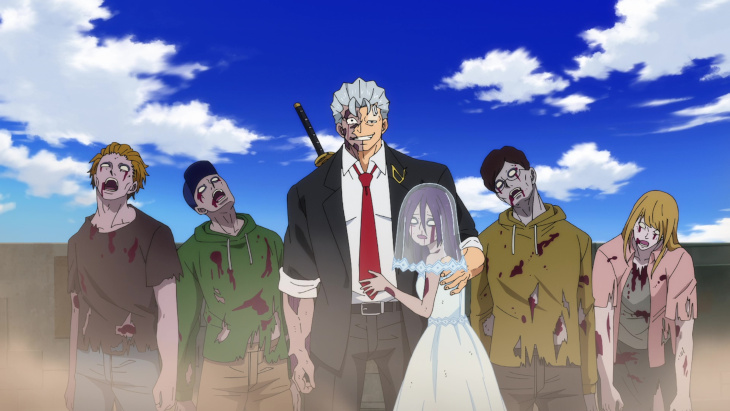
“This is the tale of one hero who guided a cast of heroes.”
Of the shows that I started back during the fall, Undead Unluck was easily the strangest. At a glance, it has many of the trappings of a standard shonen power/fantasy series like My Hero Academia or Soul Eater, and even the off-kilter style of mid-2000’s schlock like Get Backers or Black Cat. But even those comparisons don’t encapsulate the wild pacing and genre shifts that the show puts the viewer through. If I was to summarize all my issues with the show in one term, it would be, ”awkwardly composited.” Everything present in this show feels a bit at odds with everything else. This makes for a striking first impression, but it means that the series never fully gels into a cohesive story. This sounds quite negative, but there is a positive to such issues because, even if the show has its missteps, it rarely has the opportunity to get stale. This leaves me in a tricky position, as I don’t regret watching the show, but I think I’d have probably set it aside on a number of occasions if I wasn’t planning to write a review of it. If you’re a strong fan of shonen action or are just curious about the eccentric style, then I think Undead Unluck is worth sampling for a few episodes. However, if you’re not feeling it, I can’t offer any assurances that it will get better.
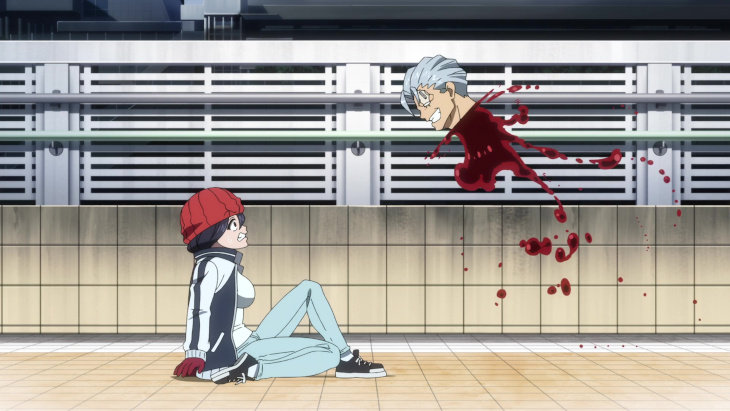
The title Undead Unluck refers to a titular pairing of characters, the luck destroying Fuuko Izumo and the immortal Andy. Both are “Negators,” individuals whose existence negates some fundamental element of reality. In Fuuko’s case, anyone whom she comes in contact with is subjected to, often terminal, instances of bad luck. Andy (a nickname Fuuko derived from his status as “Undead”) negates the concept of death, repairing his body from any level of damage within seconds. Both characters wish to strip themselves of their abilities, so they join forces to learn more about their nature as Negators and about the various factions who seek to make use of them. From there, the show introduces a cavalcade of over-the-top and ridiculous characters and abilities. When I reviewed the first episode back in October, I compared it to Durarara!! and Soul Eater, and, while those aren’t poor points of reference, in the back of my mind I had a lingering sense that this show reminded me of one work in particular. It wasn’t until approximately a month later that it finally clicked. This reminds me of Akame ga Kill. It’s not surprising the connection took a while to register given that I’ve hardly thought of Akame ga Kill since it aired. Both series have the feel of Saturday morning cartoons that have been adjusted to feature gratuitous violence and mature content. In each instance, this dichotomy between childish execution and… well… gratuitous executions proves to be simultaneously a barrier to engagement and the series’ primary draw. In truth, I never finished the anime or manga runs of Akame ga Kill (though I’ve heard both are nuts), and, as mentioned before, had I not planned on writing this review I doubt I’d have stuck with Undead Unluck either. Once a series of this type loses its sense of novelty, it has to have enough substance to fall back on, but they rarely do.
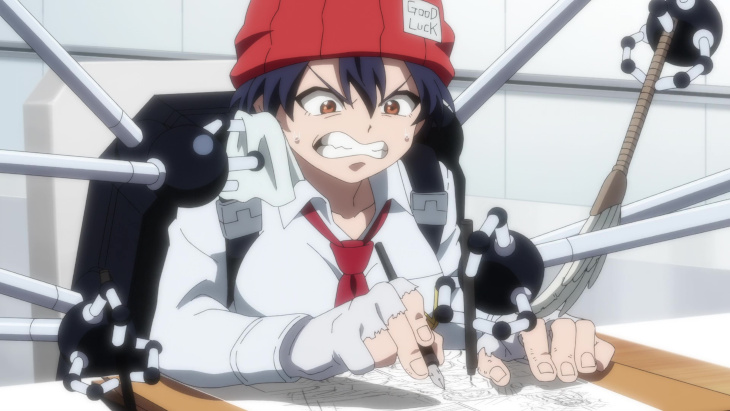
The show attempts to bypass that loss of freshness by constantly bombarding the viewer with new characters and revelations, but it can rapidly become wearisome. Only a few characters get anything more than surface-level personality development, so they largely remain a parade of colorful but forgettable archetypes. It doesn’t help that the goals of the main cast are usually shifting as well, and due to narrative devices at play, their current goals often seem completely disconnected from the core motivation of removing their Negator powers. This is because the Union, an organization that our main pair joins, is carrying out the demands of a mysterious talking book named Apocalypse which gives them missions regularly. If they fail to complete a mission, Apocalypse triggers an adjustment to the logic of the universe. If they fail too many of them, the world will end. This is why we will go from fighting a zombie horde in the western US to raiding a black market cruise ship filled with human smugglers to suddenly rushing to produce a manga in under a week. This makes engaging with the plot difficult, if not impossible, because there is never a clear path to the show. Being insane isn’t an innately negative quality for a story, but for such a narrative to land, it needs to have effective pacing, and I’m sorry to say that is where Undead Unluck clearly trips. This leads to an odd question, “How can a show be paced too quickly and too slowly at the same time?” The answer is not as complicated as one might think. The show has a bad habit of combining frenetic action and plot developments with lengthy asides and flashbacks. On one hand, the story regularly jumps from one arc to another at breakneck speed. In contrast, episodes regularly start with recaps of what came before, and the show will never use a quick two-second cut to make a point when it could use a minute-long flashback that serves as a truncated clip-show.
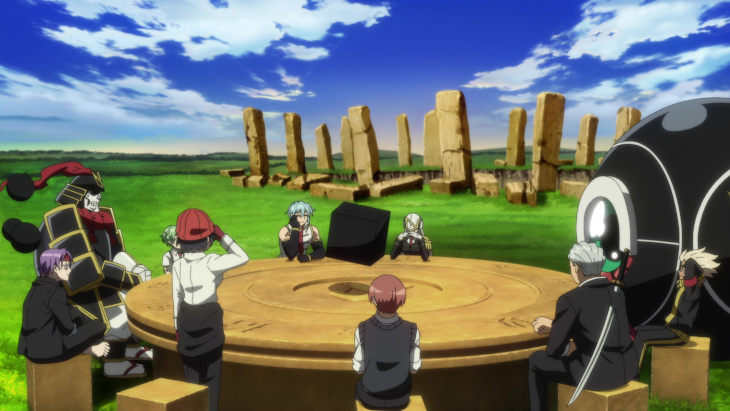
David Production is a studio that has gained some good will in the anime community with its adaptations of JoJo, but I’ve never been particularly impressed with work. They make very pretty shows, but none of them have grabbed me. The only show I finished was 2.43: Seiin High School Boys Volleyball Team and that was just okay. I’ve attempted watching Jojo, but I’ve always found it to be kind of insufferable. Their animation has been impressive though. I wouldn’t go as far as to call Undead Unluck top-tier animation; it has some poorly integrated CG and the character models sometimes vary in quality a bit, but its still an above average showing. I was hoping that having TMS in charge of the story would help keep it well produced and engaging, but somehow the end result hit some strange snags, such as the aforementioned pacing issues. I don’t have anything negative to say about the soundtrack, but the only component of it which stuck in my memory was that first opening by Queen Bee. That easily overshadowed everything else the score had to offer, and I might go as far as to call it the highlight of the entire series. Between Dororo, Chainsaw Man, and now Undead Unluck, it seems I, like the rest of the anime community, have developed a definite affection for Queen Bee tracks.
Before I wrap up, a few Notes and Nitpicks:
- I was honestly concerned I might be blowing the flashback issue out of proportion, but during the course of trying to track down some production details I stumbled across multiple Reddit threads complaining about it as well. It sounds like some fans of the source material are also frustrated by the pacing, so I’m guessing that problem is unique to this adaptation.
- I legitimately took a break from the final episode when I realized it was going to be jumping back and forth from a climactic fight to a series of flashbacks… from the episode prior. In fact, it was only when I was trying to think back on the conclusion to the show that I realized I hadn’t finished the episode.
- I didn’t really focus on it, but I don’t like that the series is pushing for a romantic pairing of Andy and Fuuko. Even if you set aside the skewing of ages due to Andy’s immortality, he still looks much older than her, and they just don’t work for me. It was a consistent source of discomfort.
Undead Unluck suffers, unfortunately and ironically, from a death by a thousand cuts. There is no singular misstep that sinks the show. Instead, it falls prey to a constant parade of irritants. Fans of outrageous action anime might still find enjoyment in this, but I can’t find it in myself to recommend it to a broader audience.

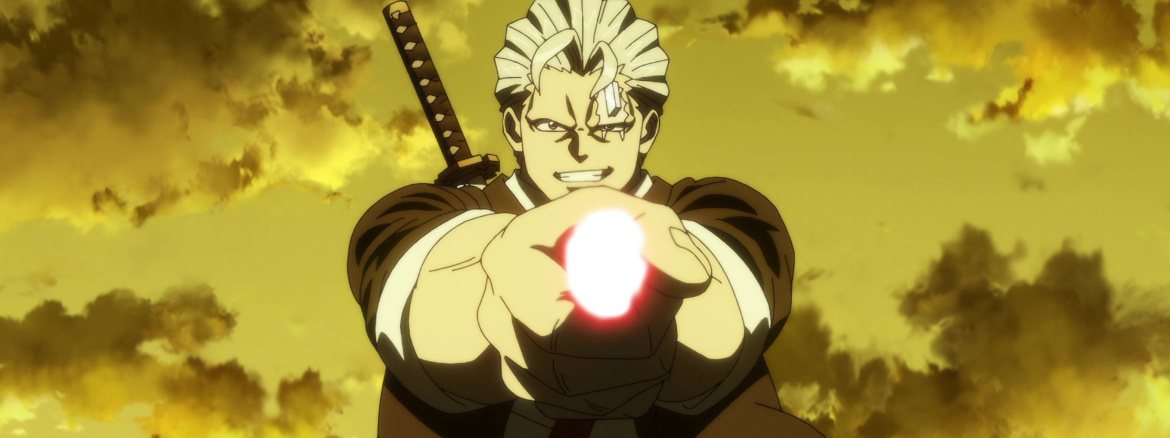
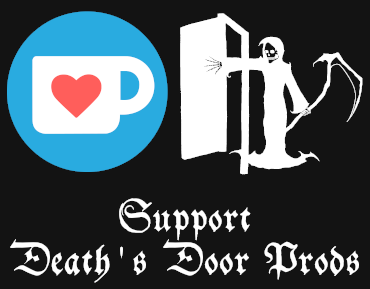

Add comment